Answered step by step
Verified Expert Solution
Question
1 Approved Answer
Part A: Tracking a Projectile 1. Choose a convenient reference point on the ball to help track its motion. Measure the x- and y-position
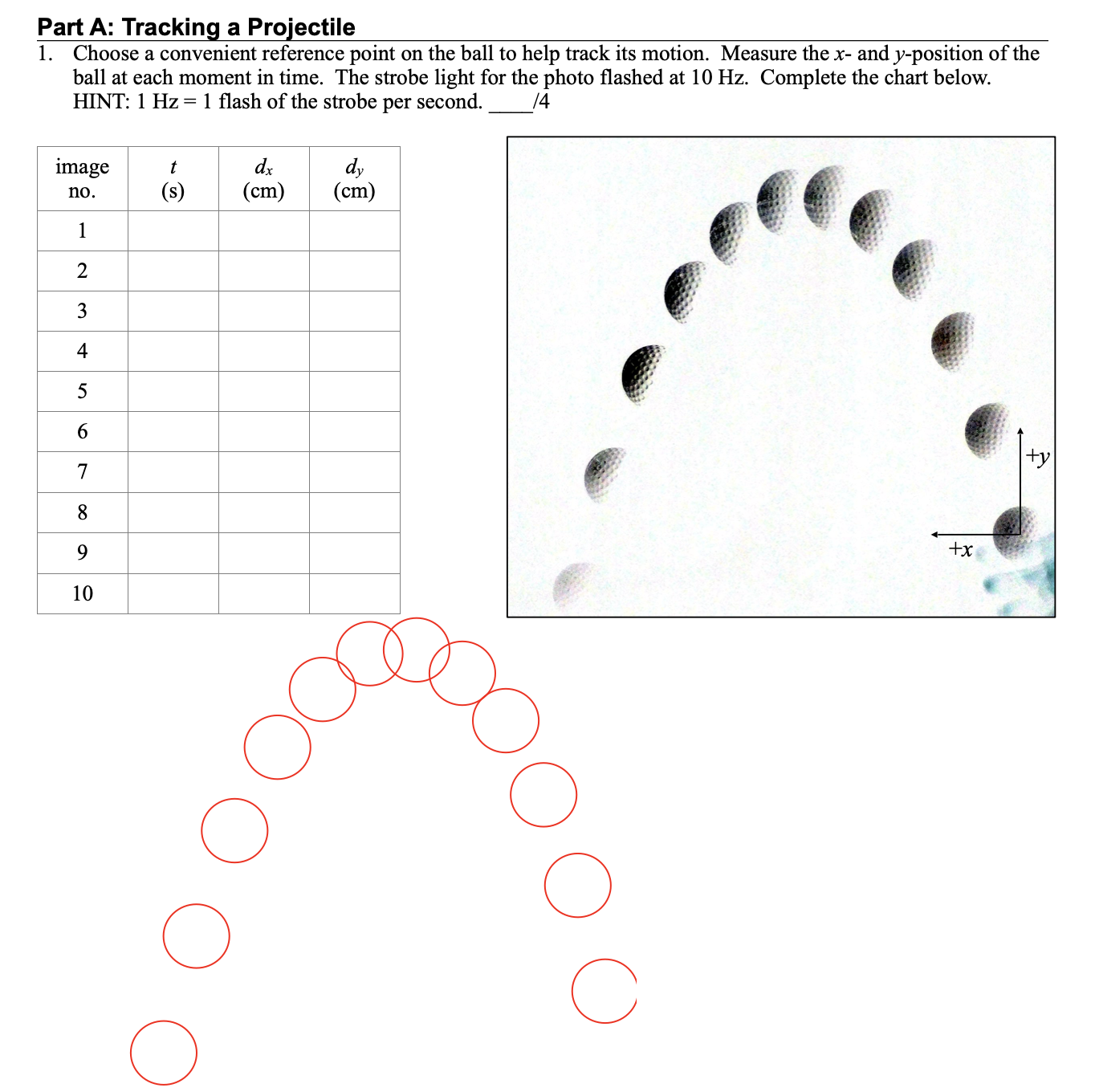
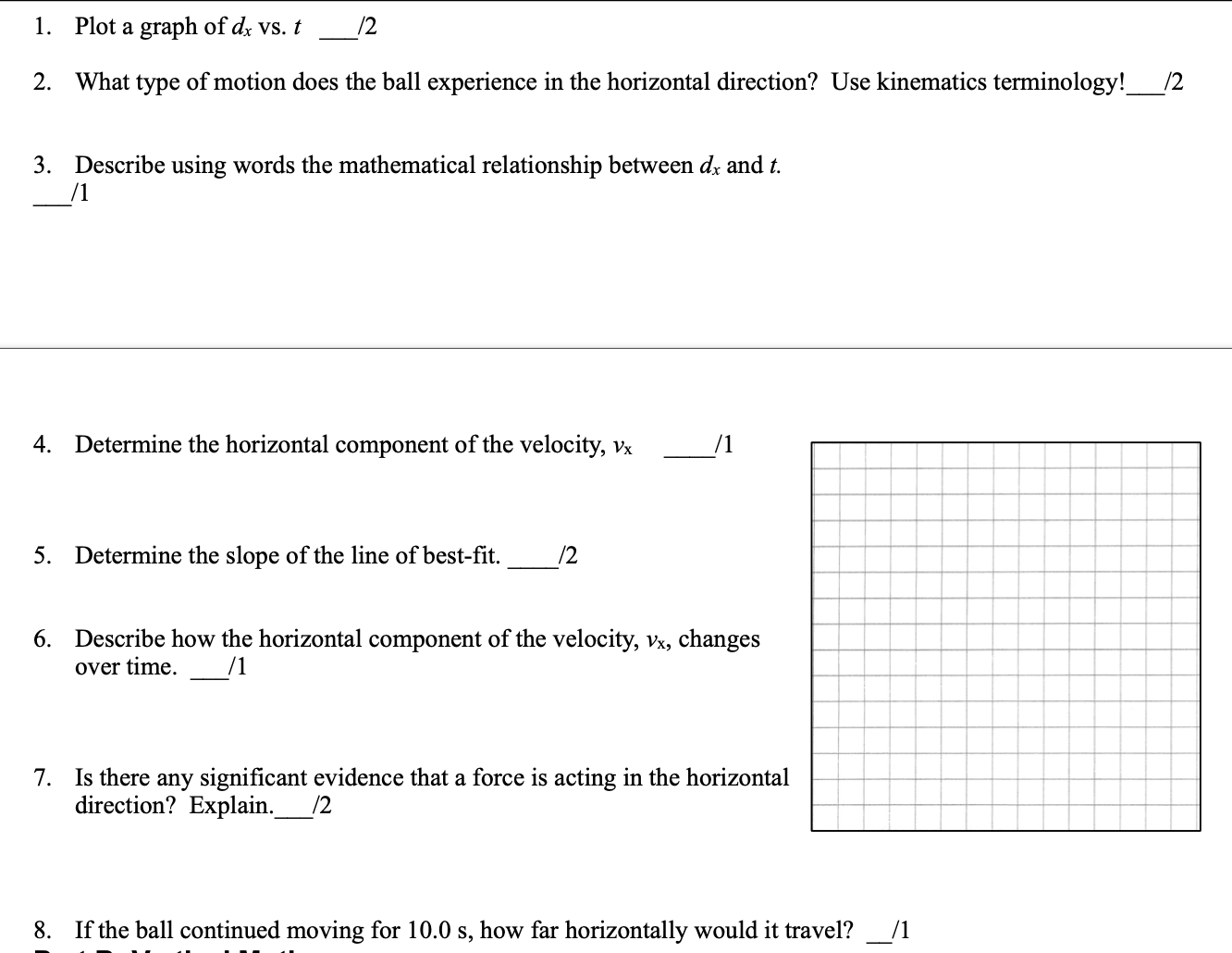
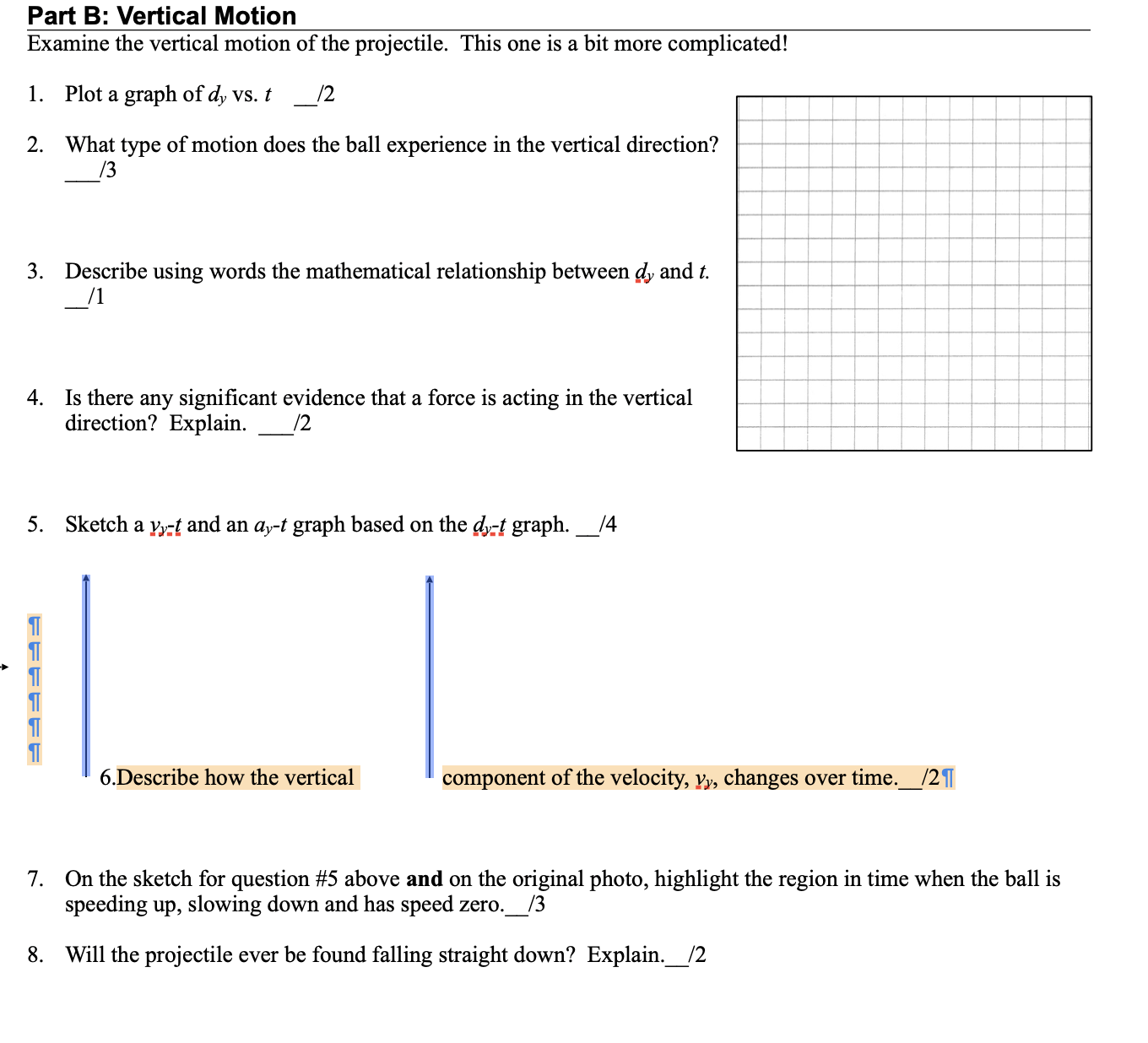
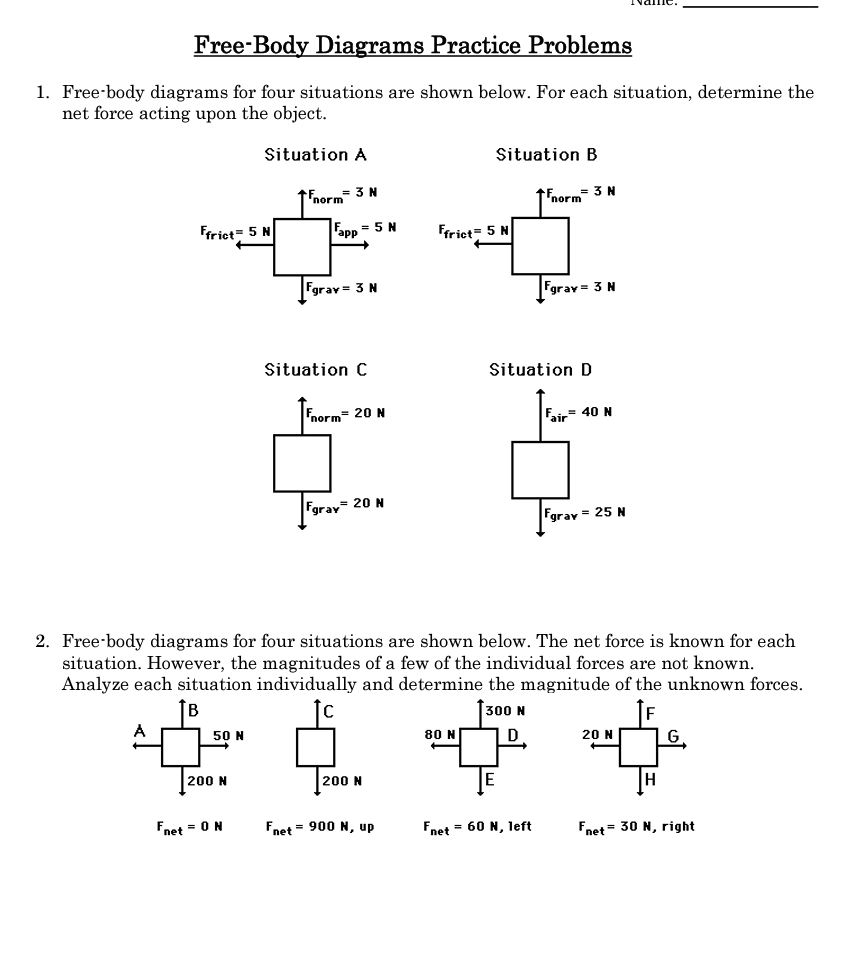
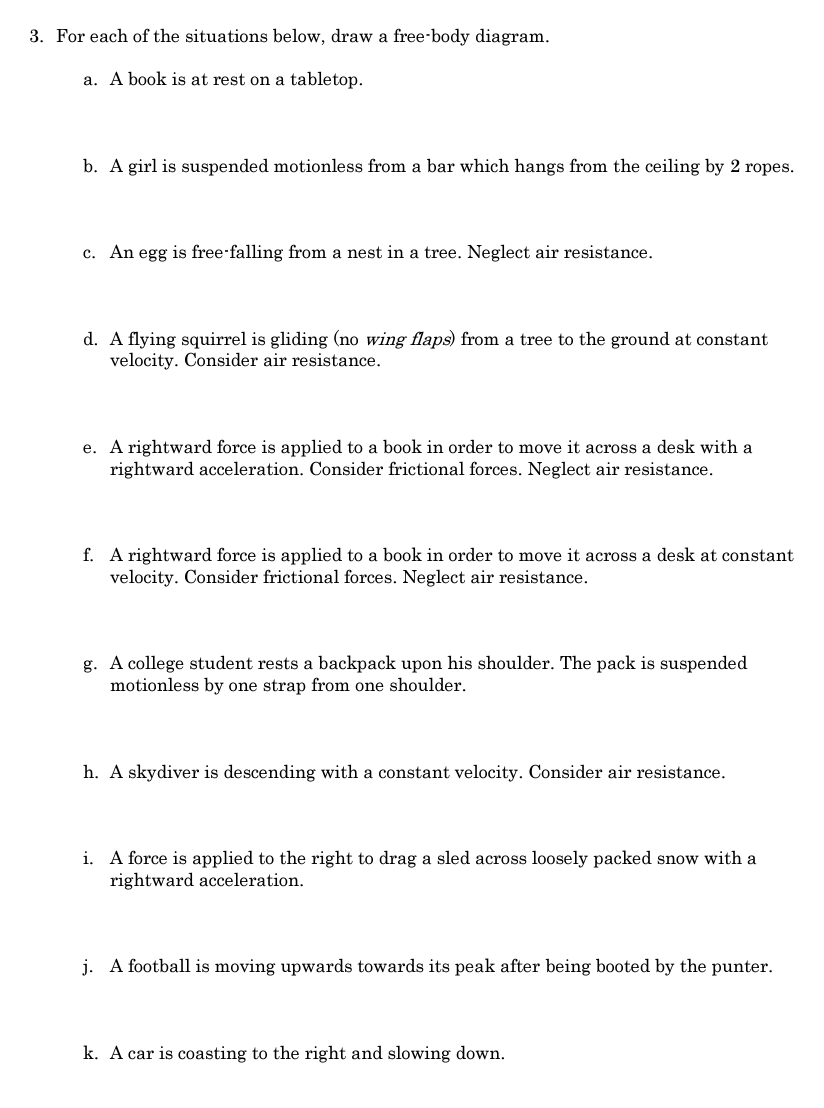
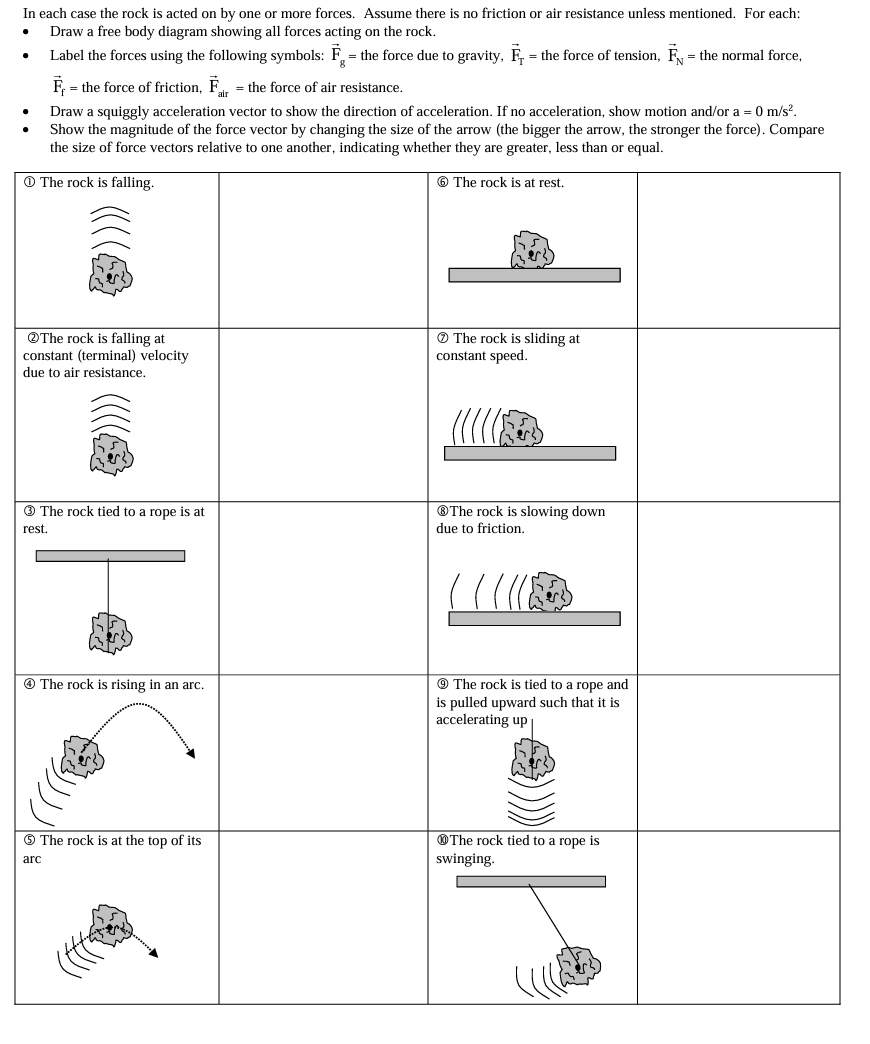
Part A: Tracking a Projectile 1. Choose a convenient reference point on the ball to help track its motion. Measure the x- and y-position of the ball at each moment in time. The strobe light for the photo flashed at 10 Hz. Complete the chart below. HINT: 1 Hz= 1 flash of the strobe per second. /4 image dx dy no. (cm) (cm) 1 2 3 4 5 6 7 8 9 10 +x ty 1. Plot a graph of dx vs. t 2. What type of motion does the ball experience in the horizontal direction? Use kinematics terminology! _/2 3. Describe using words the mathematical relationship between dx and t. /1 4. Determine the horizontal component of the velocity, vx 5. Determine the slope of the line of best-fit. 12 6. Describe how the horizontal component of the velocity, vx, changes over time. 7. Is there any significant evidence that a force is acting in the horizontal direction? Explain. 12 8. If the ball continued moving for 10.0 s, how far horizontally would it travel? Part B: Vertical Motion Examine the vertical motion of the projectile. This one is a bit more complicated! 1. Plot a graph of dy vs. t 12 2. What type of motion does the ball experience in the vertical direction? 13 3. Describe using words the mathematical relationship between dy and t. 4. Is there any significant evidence that a force is acting in the vertical direction? Explain. 12 5. Sketch a vyrt and an ay-t graph based on the d-t graph. /4 FFFFFF 6.Describe how the vertical component of the velocity, yy, changes over time. /2 7. On the sketch for question #5 above and on the original photo, highlight the region in time when the ball is speeding up, slowing down and has speed zero. _/3 8. Will the projectile ever be found falling straight down? Explain. ___/2 Free Body Diagrams Practice Problems 1. Free-body diagrams for four situations are shown below. For each situation, determine the net force acting upon the object. Ffrict 5 N Situation A Situation B Fnorm = 3 N 3 N norm Fapp = 5 N Ffrict 5 N Fgray = 3 N Fgray = 3 N Situation C Situation D Fnorm 20 N Fair 40 N Fgray= 20 N Fgray = 25 N 2. Free-body diagrams for four situations are shown below. The net force is known for each situation. However, the magnitudes of a few of the individual forces are not known. Analyze each situation individually and determine the magnitude of the unknown forces. A 50 N +1 200 N 200 N 80 N - 300 N D 20 N G Fnet = 0 N Fnet 900 N, up Fnet = 60 N, left Fnet 30 N, right 3. For each of the situations below, draw a free-body diagram. a. A book is at rest on a tabletop. b. A girl is suspended motionless from a bar which hangs from the ceiling by 2 ropes. c. An egg is free-falling from a nest in a tree. Neglect air resistance. d. A flying squirrel is gliding (no wing flaps) from a tree to the ground at constant velocity. Consider air resistance. e. A rightward force is applied to a book in order to move it across a desk with a rightward acceleration. Consider frictional forces. Neglect air resistance. f. A rightward force is applied to a book in order to move it across a desk at constant velocity. Consider frictional forces. Neglect air resistance. g. A college student rests a backpack upon his shoulder. The pack is suspended motionless by one strap from one shoulder. h. A skydiver is descending with a constant velocity. Consider air resistance. i. A force is applied to the right to drag a sled across loosely packed snow with a rightward acceleration. j. A football is moving upwards towards its peak after being booted by the punter. k. A car is coasting to the right and slowing down. In each case the rock is acted on by one or more forces. Assume there is no friction or air resistance unless mentioned. For each: Draw a free body diagram showing all forces acting on the rock. Label the forces using the following symbols: F = the force due to gravity, F = the force of tension, FN = the normal force, F = the force of friction, Fair = the force of air resistance. Draw a squiggly acceleration vector to show the direction of acceleration. If no acceleration, show motion and/or a = 0 m/s. Show the magnitude of the force vector by changing the size of the arrow (the bigger the arrow, the stronger the force). Compare the size of force vectors relative to one another, indicating whether they are greater, less than or equal. The rock is falling. The rock is at rest. The rock is falling at constant (terminal) velocity due to air resistance. The rock is sliding at constant speed. The rock tied to a rope is at rest. The rock is slowing down due to friction. arc 7 The rock is rising in an arc. The rock is tied to a rope and is pulled upward such that it is accelerating up The rock is at the top of its The rock tied to a rope is swinging.
Step by Step Solution
There are 3 Steps involved in it
Step: 1

Get Instant Access to Expert-Tailored Solutions
See step-by-step solutions with expert insights and AI powered tools for academic success
Step: 2

Step: 3

Ace Your Homework with AI
Get the answers you need in no time with our AI-driven, step-by-step assistance
Get Started


